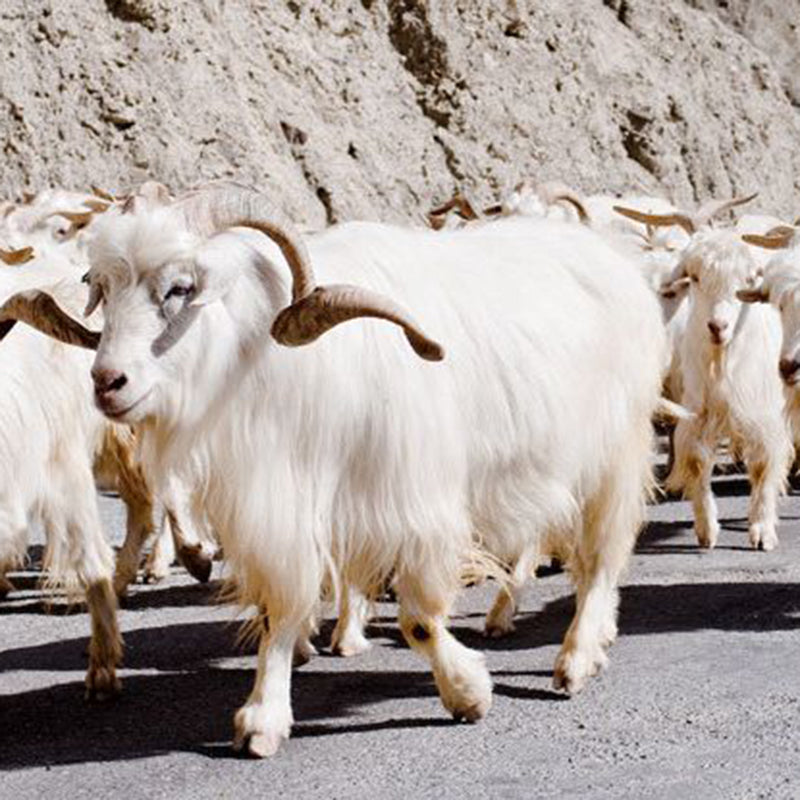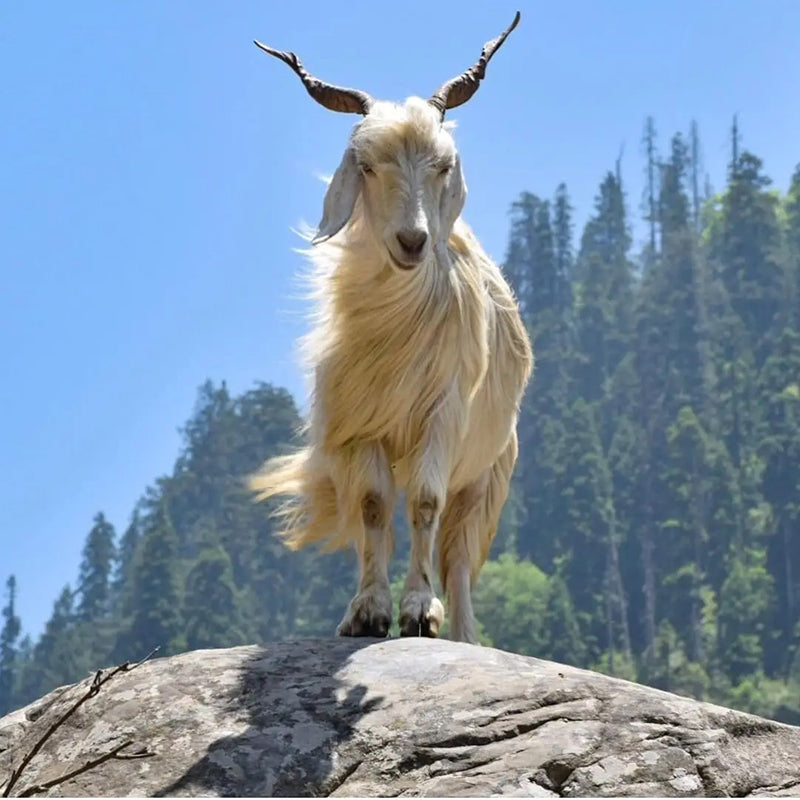
UNVEILING THE MYSTIQUE: THE TRUTH ABOUT PASHMINA
In the realm of luxurious fabrics, few hold the allure and mystique of pashmina. Revered for its softness, warmth, and exquisite craftsmanship, pashmina has captivated the hearts of fashion enthusiasts and connoisseurs for centuries. Yet, behind its shimmering facade lies a story rich in heritage, tradition, and craftsmanship that deserves to be unveiled.
Pashmina, derived from the Persian word "pashm" meaning wool, originates from the high-altitude regions of the Indian Himalayas, particularly Kashmir. Here, amidst breathtaking landscapes and a rich cultural tapestry, skilled artisans handcraft this fabric using techniques passed down through generations. The process begins with the delicate extraction of fine wool from the underbelly of Himalayan goats, specifically the Changthangi breed. These goats endure harsh winters, resulting in an exceptionally soft and insulating fiber, renowned worldwide as cashmere.
What sets pashmina apart is not just its unparalleled softness, but also its remarkable warmth-to-weight ratio. Despite its lightweight and airy feel, pashmina provides exceptional insulation, making it ideal for cold climates and chilly evenings. This unique combination of comfort and elegance has made pashmina a coveted accessory for discerning fashionistas and global tastemakers.
However, the journey from raw material to finished product is not without its challenges. The production of authentic pashmina involves painstaking craftsmanship and meticulous attention to detail. Skilled artisans employ traditional techniques such as hand-spinning, hand-weaving, and intricate embroidery to create timeless pieces that showcase the beauty of this noble fiber.
In recent years, the popularity of pashmina has led to an influx of mass-produced imitations flooding the market. These imposters often lack the quality, craftsmanship, and authenticity of genuine pashmina, deceiving consumers with inferior alternatives. To ensure the authenticity of pashmina products, it is essential to look for reputable sources that uphold ethical and sustainable practices, supporting local artisans and preserving traditional craftsmanship.
Beyond its aesthetic appeal, pashmina embodies a deeper cultural significance. It serves as a symbol of Kashmiri heritage and identity, representing centuries of craftsmanship and artistic expression. Each pashmina shawl or scarf carries with it a piece of this rich cultural legacy, connecting the wearer to a tradition that spans generations.
As consumers, it is crucial to recognize the value of authentic pashmina and the skilled artisans behind its creation. By supporting ethical and sustainable practices, we not only preserve a cherished tradition but also empower communities and safeguard the future of this timeless art form.
In essence, pashmina transcends mere fashion to become a testament to the enduring beauty of craftsmanship, the resilience of tradition, and the timeless allure of natural fibers. It is a fabric steeped in history, woven with care and passion, and destined to be cherished for generations to come.
Pashmina, derived from the Persian word "pashm" meaning wool, originates from the high-altitude regions of the Indian Himalayas, particularly Kashmir. Here, amidst breathtaking landscapes and a rich cultural tapestry, skilled artisans handcraft this fabric using techniques passed down through generations. The process begins with the delicate extraction of fine wool from the underbelly of Himalayan goats, specifically the Changthangi breed. These goats endure harsh winters, resulting in an exceptionally soft and insulating fiber, renowned worldwide as cashmere.
What sets pashmina apart is not just its unparalleled softness, but also its remarkable warmth-to-weight ratio. Despite its lightweight and airy feel, pashmina provides exceptional insulation, making it ideal for cold climates and chilly evenings. This unique combination of comfort and elegance has made pashmina a coveted accessory for discerning fashionistas and global tastemakers.
However, the journey from raw material to finished product is not without its challenges. The production of authentic pashmina involves painstaking craftsmanship and meticulous attention to detail. Skilled artisans employ traditional techniques such as hand-spinning, hand-weaving, and intricate embroidery to create timeless pieces that showcase the beauty of this noble fiber.
In recent years, the popularity of pashmina has led to an influx of mass-produced imitations flooding the market. These imposters often lack the quality, craftsmanship, and authenticity of genuine pashmina, deceiving consumers with inferior alternatives. To ensure the authenticity of pashmina products, it is essential to look for reputable sources that uphold ethical and sustainable practices, supporting local artisans and preserving traditional craftsmanship.
Beyond its aesthetic appeal, pashmina embodies a deeper cultural significance. It serves as a symbol of Kashmiri heritage and identity, representing centuries of craftsmanship and artistic expression. Each pashmina shawl or scarf carries with it a piece of this rich cultural legacy, connecting the wearer to a tradition that spans generations.
As consumers, it is crucial to recognize the value of authentic pashmina and the skilled artisans behind its creation. By supporting ethical and sustainable practices, we not only preserve a cherished tradition but also empower communities and safeguard the future of this timeless art form.
In essence, pashmina transcends mere fashion to become a testament to the enduring beauty of craftsmanship, the resilience of tradition, and the timeless allure of natural fibers. It is a fabric steeped in history, woven with care and passion, and destined to be cherished for generations to come.


